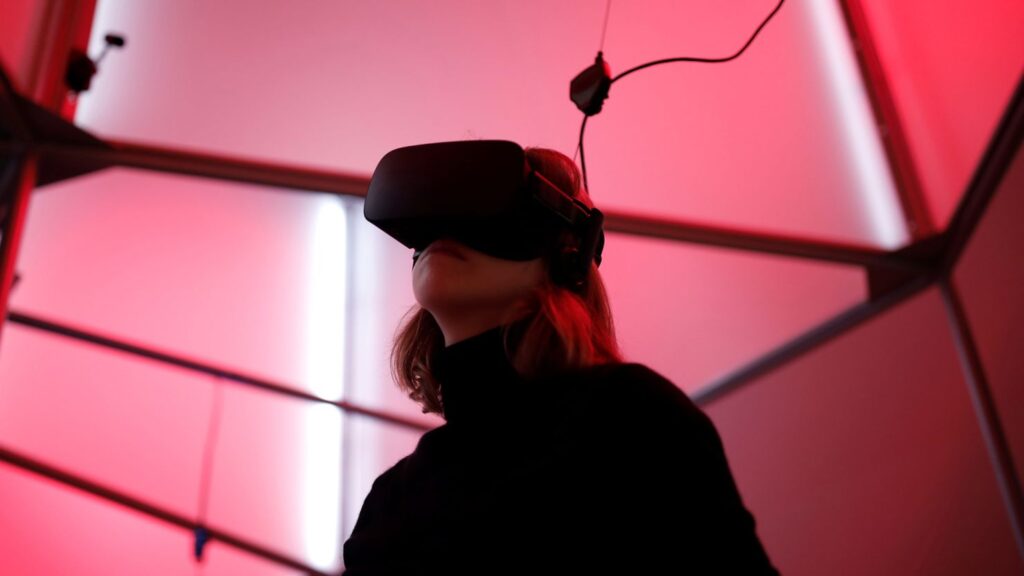
Virtual reality (VR) is poised for a significant breakthrough in the entertainment industry, with leading technology companies making renewed investments and partnerships aimed at pushing VR into the mainstream. After more than a decade since the launch of the Oculus Rift, which sparked initial excitement about VR’s potential, there are signs that the technology is finally ready to fulfill its promise.
Recent reports indicate that Meta is engaging in discussions with major entertainment entities such as Disney and A24 to create immersive content for its Quest VR headsets. This strategic move, highlighted by a Wall Street Journal report last month, underscores the growing interest in producing exclusive VR experiences that could attract a larger audience.
In parallel, Apple has made strides with its Vision Pro headset, announcing an update in June 2025 that allows users to share VR content across multiple headsets, enhancing social viewing experiences. Earlier this year, Apple also introduced an immersive concert featuring Metallica and plans for further performance upgrades to the Vision Pro.
The combination of these developments suggests that tech and media giants remain confident that consumers will invest in premium VR experiences, which include concerts, films, and sporting events.
Breaking the Cycle of Adoption
Over the past ten years, VR headset manufacturers have made significant advancements, producing lighter and more powerful devices. Yet, the industry has grappled with a persistent challenge: to attract high-quality entertainment content, mass adoption of VR headsets is essential. Conversely, without compelling content, widespread adoption remains elusive.
Sarah Malkin, director of entertainment content for Meta’s VR division, Reality Labs, expressed optimism about the current state of VR technology. She stated, “I think the ‘it moment’ is when you are regularly engaging in experiences in mixed reality that are super complementary and part of your integrated life. To me, that’s already happening.”
According to IDC, a global market intelligence firm, shipments of augmented reality (AR) and VR headsets rose by around 10% in 2024, reaching 7.5 million units globally and nearly 30.8% in the United States, with 3.4 million units sold. Although IDC forecasts a decline in shipments due to postponed product launches in 2025, a rebound is expected in 2026, with worldwide shipments projected to surge by 98.5% to 11.3 million units.
Despite these positive indicators, the financial performance of VR initiatives has not always met expectations. Over the past three years, Meta’s Metaverse project has incurred losses amounting to $46 billion, with Reality Labs reporting an operating loss of $4.2 billion and only $412 million in sales in the first quarter of 2025. Nonetheless, major tech companies continue to explore VR and AR technologies.
Investments and Innovations in Immersive Content
Recent investments reflect a broader trend toward integrating VR into mainstream entertainment. Meta has invested $3.5 billion in eyewear manufacturer EssilorLuxottica SA to enhance its augmented reality capabilities. Snap has announced plans to launch new AR spectacles in 2026, while Google collaborates with partners like Xreal and Samsung on upcoming headsets that utilize its new Android XR software. Samsung is expected to debut a new device under the name Project Moohan.
Despite the potential for growth, the path to mainstream acceptance for VR and AR content remains fraught with challenges. Industry experts emphasize the need for exclusive content tailored to the unique capabilities of immersive platforms. Jenna Seiden, an industry consultant, noted, “You can’t just take the flat version of what you put on Disney+ or Netflix or Amazon, and just throw that up. You need to build natively so the audience is going to have a different experience per platform.”
Seiden points out that media companies already understand the importance of exclusivity in attracting audiences. The success of platforms like HBO Max and Apple TV+ demonstrates that unique content can drive user engagement, a model that can be effectively applied to VR content.
Live sports events represent a promising avenue for VR adoption. Paul Raphaël, co-founder of Felix & Paul, highlighted that sports can be adapted seamlessly for immersive platforms using 180-degree cameras. “You already have quite a few events and sports being broadcast, whether it’s live or asynchronous,” he explained.
For the entertainment industry, the emergence of VR and AR presents an opportunity to address current challenges, including the decline of traditional media distribution models. Jack Davis, co-founder of CryptTV, remarked that VR headsets could serve as a vital new platform for premium content, especially as the industry undergoes significant structural changes.
The investment landscape for VR has fluctuated in recent years, with funding in XR technologies waning compared to sectors like artificial intelligence and autonomous vehicles. Data from Crunchbase indicates that XR funding peaked at approximately $4.1 billion in 2021 but plummeted to around $347.7 million by 2025. In contrast, investment in AI surged from $39.96 billion in 2019 to $105.36 billion by 2025.
Despite these challenges, experts such as Bertrand Nepveu, a former contributor to Vision Pro, believe that renewed interest in XR is on the horizon. “Now that AI is more understood, you know what it’s good for, what it’s not capable of, the budgets now are going back into XR,” he stated.
As the technology behind mixed reality headsets continues to advance, the future of VR in entertainment appears promising, though opinions vary on when a significant breakthrough might occur. While some experts predict that transformative moments could arrive within one to two years, others anticipate a timeframe of three to seven years.
Paul Raphaël suggested that traditional 2-D content may soon feel outdated. He said, “Content, the way it is consumed today, is going to be much like we think of black and white movies, where, if a film isn’t immersive, it doesn’t lose its value, but it becomes something of another era.” As the industry navigates these changes, the race to revolutionize entertainment through virtual reality continues.







